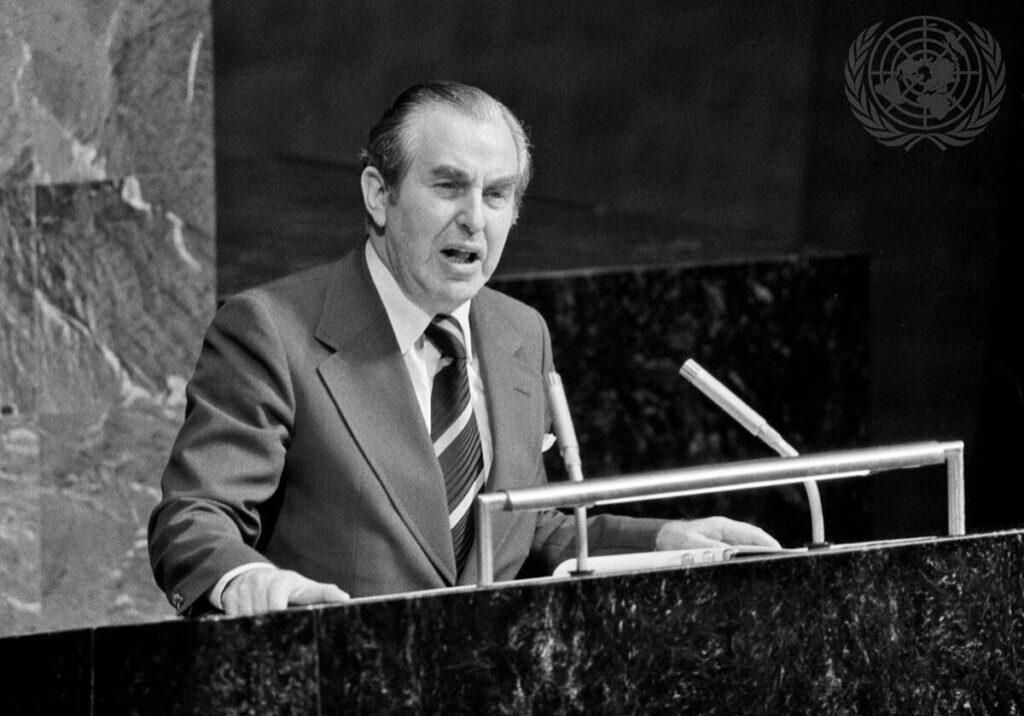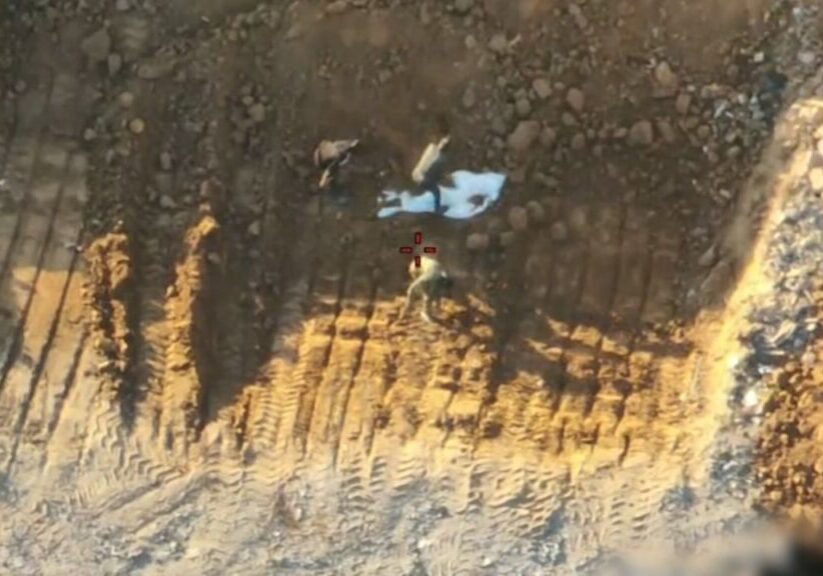Australia/Israel Review
An Unsettling Bill
Dec 23, 2016 | Amotz Asa-El

Amotz Asa-El
The West Bank’s highest peak, the 1006 m. Mount Baal Hatzor, has seen a lot since it marked the border between the antagonistic kingdoms of Judah and Israel in biblical days.
Now, a cluster of houses on a hilltop 70 metres under this peak has become a civic battlefield involving, besides the 40 families it houses, politicians, judges, activists and diplomats who sprawl from Jerusalem and Ramallah to Brussels and New York.
Named Amona, the community’s distinction is not in its location – it is but one of more than 200 settlements where more than 350,000 Israelis live beyond Israel’s former boundary with Jordan – not including Jerusalem, where an additional 200,000 live beyond the pre-1967 armistice lines.
Amona is different because the High Court of Justice has ruled it was built on privately-owned Palestinian land, and ordered its evacuation by 25 December 2016.
Settlements beyond the cartographic Green Line, which runs between Israel’s pre- and post-1967 borders – were deliberately located by Israel on non-private land.
This policy was so strict that back in the late 1970s, when the newly elected Prime Minister Menachem Begin prepared to build civilian settlements beyond the Green Line in increased quantities, he ordered a senior Justice Ministry official to thoroughly survey the West Bank by helicopter and jeep in order to map out the non-private lands where settlements could be built without expropriation of private land.
Begin’s policy was implemented. Even the opponents of settlements agree that the communities he and then-Defence Minister Ariel Sharon built during the great development drive of the early 1980s were generally located on non-private “state land”.
Then again, there were deviations from this policy, stemming from two separate circumstances: one exceptional, during the original drive, and the other, much more common, occurring since the mid-1990s.
The former involves authorised construction that happened innocently on what was only claimed much later to be private land. Privately-owned land may have been unregistered because, according to the Ottoman land laws which remained valid under British, Jordanian and Israeli rule, land that was continuously cultivated became its cultivator’s property even if it wasn’t registered.
The planners of the settlement drive therefore sought proof of continuous cultivation when claimants could not produce deeds. When private Palestinian ownership was established, planning was adjusted so as to respect it. Even so, there have been cases of mapping mistakes. For instance, in 2007 the government admitted that 0.5% of Maale Adumim, a city of 40,000 a few minutes’ drive east of Jerusalem, sits on privately owned Palestinian land.
The second, and entirely different, circumstance, emerged in the mid-1990s, when some settlers set out independently to expand existing settlements, in the hope of torpedoing the Oslo Accords of 1993. These communities, commonly known as outposts, are where the problem mainly lies today.
Amona was born against this backdrop, in 1995. Though unlike other such “outposts” it actually started off as a legitimate archeological site, the archeologists were gradually replaced by 30 settler families who initially lived in mobile homes, which soon gave way to permanent houses.
Local settlers see their project as an extension of the nearby settlement of Ofra. However, in terms of Israeli laws, it is an unauthorised settlement in three ways: It was not part of a government resolution; the land’s legal availability was not established; and it was built despite being part of no formal development plan.
According to anti-settlement activists, a total of 95 such outposts have sprouted across the West Bank since the mid-1990s. They are where most of the 4,000 houses reportedly built on private land are scattered. The exact number of outposts has never been formally established, not even in a report about the outposts’ legal status commissioned by the Justice Ministry last decade under then-Prime Minister Ariel Sharon.
Sharon ordered the report as part of his promise to then-US President George W. Bush to remove all illegal outposts. In March 2005, after having received the report, his government passed a resolution to dismantle all illegal outposts. Sharon intended to get down to this business immediately after the retreat from Gaza which he oversaw in the summer of 2005. However, in January 2006, Sharon suffered a massive stroke and fell comatose, never to recover.
His successor, Ehud Olmert, was faced with a High Court ruling that some of Amona’s houses were situated on private Palestinian land. Olmert, as acting-prime minister, ordered the demolition of those houses, a task for which a large force of mounted police was assembled – only to face thousands of right-wing activists that crowded Amona, its rooftops and environs. Clashes soon broke out, as demonstrators threw stones and police wielded clubs. More than 100 people were injured, but none seriously.
Despite this drama, and despite his election triumph the following month, Olmert never got to address the broader illegal-outpost problem, having been drawn into the Second Lebanon War in the summer of 2006, and then facing corruption charges that ultimately resulted in his downfall.
That is how Binyamin Netanyahu, when he returned to power in 2009, inherited the prickly issue of the outposts. Now, following seven years of limbo, Netanyahu, like Olmert before him, is compelled to act due to a High Court ruling. Yet unlike Olmert, he is tackling the issue from the opposite end of the political field.
For Olmert, the outpost challenge was a test of his declared intention to unilaterally retreat from much of the West Bank, following the unilateral departure from Gaza.
Indeed, had it not been for Hezbollah’s provocation later that year and the consequent Lebanon war of summer 2006, the momentum of the retreat from Gaza would likely have carried over into the West Bank, and the outposts would have been its first targets.
For Netanyahu, the outpost challenge is a test of his intention to maximise Israel’s presence in the West Bank, if and when the two-state solution he has endorsed is someday implemented.
And so, faced with the High Court ruling about Amona, and concerned its prospective evacuation might result in ownership claims and court petitions elsewhere, Netanyahu and his conservative coalition set out to preempt further such action through legislation.
The result has been a bill that divides not only right and left, but also the right itself.
According to what is now known as the “Settlement Regulation Bill”, Amona will be evacuated as the court demands, but future petitions that claim retrospectively that existing communities are located on private land will not lead to evacuations. Instead, owners will be offered either alternative land or financial compensation worth 125% of the market value of the land occupied by settlement buildings and infrastructure.
The bill has been welcomed by the coalition’s most right-wing faction, the Jewish Home party, but was originally opposed by the centre-right Kulanu faction, led by Finance Minister Moshe Kahlon. Using his veto power over the government’s proposed legislation, Kahlon insisted that the bill had to incorporate Amona’s evacuation because that was the High Court’s demand.
With agreement thus reached between the partners who flank Netanyahu from right and left, the bill passed a first reading in the Knesset on Dec. 7 by a vote of 58 to 51.
The bill’s Israeli opponents, led by the Labor Party, were joined by an international chorus that ranged from the European Union and German chancellor Angela Merkel to the UN, whose special Middle East envoy Nickolay Mladenov said “I encourage Israeli legislators to reconsider this move.”
Yet most meaningfully, there has been a powerful dissenting vote within Netanyahu’s Likud party joining the opposition’s charge that the bill is unconstitutional.
“This is a terrible law,” said Benny Begin, son of Likud founder Menachem Begin, who upholds his father’s combination of hawkish nationalism and legalistic purism. “The bill is meant to approve land robbery,” warned Begin-the-younger.
At 73, Begin, a professional geologist who first joined the Knesset 28 years ago, is its oldest member and wields considerable moral authority, for both the right and left. This is aside from his experience as a veteran lawmaker, which leads him to predict that the High Court will overturn the bill as an unconstitutional violation of property rights.
It is an assessment shared by Israel’s Attorney General Avichai Mandelblit, who has said he will not defend it in front of the High Court because it will be indefensible. This prediction is apparently shared by Netanyahu, whose confidant, Minister Without Portfolio Tzachi Hanegbi, said the bill will likely undergo changes as it proceeds to its second and third readings, and that it will take a while until it becomes law.
Netanyahu, for his part, appears to be using the legislative commotion to test the incoming Trump Administration’s attitude toward the future of the West Bank.
The timing for such a test, the twilight weeks between one administration’s departure and another’s arrival, is in some respects ideal. If Trump remains silent in the face of the legal commotion surrounding the West Bank, Netanyahu can presumably use the upcoming Trump presidency to build more freely on non-private land in the West Bank.
That of course remains to be seen, as does anything else regarding Trump’s enigmatic designs – and so does the fate of the settlement-regulation bill in both the legislature and Israel’s High Court.
For now, the one certainty in all this appears to be that Amona’s 40 families will be evacuated, with the grudging approval of their political sponsor, the Jewish Home Party. “It is painful and agonising,” explained Minister Hanegbi, but “the residents will be uprooted from their homes this month.”
Tags: Israel






